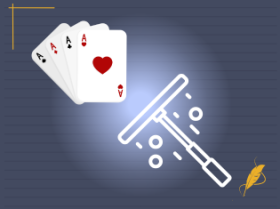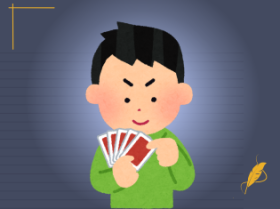Poker isn’t based entirely on luck; it’s about making informed choices at the right time. The strategy shows you when to bet, fold, and raise during a round. It considers your hand, cards on the board, other player’s decisions, and the sitting area. This beginner’s guide breaks down simple, effective strategies that will help to pump up your gameplay.
Position Matters: Where You Sit Changes Everything
We can divide the poker table positions into three groups. Each of them has a different impact on the game that forces you to follow a particular style of play.
- Early Position — the first four seats on a poker table, where you need to play cautiously. Raise if you feature a pretty strong hand, possibly a pair.
- Middle Position — occupy three seats (5, 6, and 7). Raise whenever you have a promising hand featuring face cards.
- Late Position — the last three sets on the table (8, 9, and 10). It’s possible to play aggressively, as you have an advantage. You can raise with numerous hands and get to see how the opponents pay.
How to Choose the Right Starting Hands
You should start every round according to your sitting position and hole cards. Study the details revealed in the table below.
| Hand Category | Examples | Best Position to Play | Notes |
|---|---|---|---|
| Small Connectors | 5 and 4 of hearts; 6 and 5 of spades | Late position | Play if you notice a cheap flop |
| High Suited Cards | K and A of diamonds; Q and K of clubs | Middle or late position | Perfect for flushes; fold if you don’t connect the flop |
| Suited Connectors | 9 and 10 of hearts; 8 and 9 of spades | Late position | A chance for flushes and straights; be cautious |
| High Unpaired Cards | KA; KQ; AQ | Any position, but very strong in the middle or late | Fold if you don’t have a strong combination on the flop |
| Low Pairs | 44; 55; 66 | Middle or late position | It’s safer in the middle or latte compared to the early position |
| Medium Pairs | 88; 99; TT | Early or middle position | Be cautious and raise if possible |
| High Pairs | QQ; KK; AA | Any position | An aggressive play is possible |
Betting Strategy: Knowing When to Bet and Fold
Your moves should reflect your hand strength and position at the table. And when the moment’s right, a well-timed bluff can push opponents to fold. Here are some key betting tips:
- Always bet and possibly raise when you have a strong hand in any position.
- Fold if the pot odds are below the break-even point.
- Bluff only when it makes sense, according to the cards on the board.
- Know your odds and outs before betting.
Pro Tip:Stay disciplined with your bets. Focus on value bets with good hands.
Understanding Pot Odds and Outs
Pot odds show the total winning amount in a poker round and how much you have to spend to get it. If the odds are lower than your break-even point, you should fold.
The table below shows the probabilities of completing certain hands based on the outs (cards needed to improve your hand). ‘One Card to Come’ and ‘Two Cards to Come’ refer to scenarios with one or two draws remaining.
| Draw Type | Odds by Turn | One Card to Come (%) | Odds by River | Two Cards to Come (%) |
|---|---|---|---|---|
| Flush Draw | 4.2 to 1 | 19% | 1.9 to 1 | 35% |
| Open-Ended Straight Draw (obtaining one of two possible cards completes a straight) | 4.2 to 1 | 17% | 2.2 to 1 | 32% |
| Gutshot Straight Draw (missing one specific card to complete a straight) | 11 to 1 | 9% | 5.2 to 1 | 17% |
| Full House (Two-Pair to Trips) | 11 to 1 | 9% | 5.2 to 1 | 17% |
| Full House (Trips to Full) | 5.7 to 1 | 15% | 2 to 1 | 33% |
| Two Overcards to Top Pair | 6.8 to 1 | 13% | 3.2 to 1 | 24% |
Bluffing Basic for Beginners
Bluffing in poker involves betting or raising without a strong hand, aiming to convince opponents that you hold a much better combination. It’s about creating doubt and pushing others to fold. Here are some key bluffing tips to keep in mind:
- Bluff only when the situation is favourable.
- Bluff from a late position for better control.
- Avoid bluffing against multiple opponents.
- Target players who are more cautious and can be bluffed.
- Participants in early positions are less likely to call a late-position bluff.
- Ensure you have a strong stack size.
- A raise from the blinds can often make for an effective bluff.
Pro Tip:Bluff carefully and only when confident it will confuse your opponent’s thinking. Over-bluffing can turn you into an easy target.
Tips to Read Opponents in Poker
As a beginner, you need to learn how to spot patterns and tell off opponent players. Follow these important points:
| Quick calls are a trait of over-confident players | Checking too often could indicate a weakness |
| Participants who make big calls without good hands will likely lose more frequently | Play aggressively against those who showed numerous weak hands |
| Inexperienced gamers usually bet a different amount when getting a strong hand | Those who suddenly change their talking behaviour might be bluffing |
| If a player freezes after making a big bet, they are possibly bluffing | Players who consistently raise pre-flop but fold to post-flop aggression may be trying to steal pots |
Common Mistakes to Avoid
Here are some key pitfalls to watch out for:
- Playing too many hands leads to poor decision-making.
- Bluffing too much, making your moves predictable.
- Letting emotions influence your thoughts.
- Ignoring table positions and the strategy for each seat.
- Not observing other players’ actions and table dynamics.
- Neglecting to consider odds and probabilities in your choices.
Essential Tips for Success in Poker
Consistent practice is key. Here are a few essentials to guide you to play poker:
- Start with low-stakes tables: Build your confidence and strategy while you learn.
- Set and stick to a budget: Avoid chasing losses by setting clear limits.
- Practice with online demo games: Use free platforms to refine your skills without financial pressure.
- Focus on ranges over hands: Train yourself to think about your opponents’ possible ranges instead of specific cards.
- Play aggressively when needed: Aggression pays off in poker, but only when your position and hand strength justify it.
- Use cheat sheets when learning: They help you remember hand rankings and odds.
- Review your mistakes: Keep track of your games and analyse missteps to improve.
- Play from different positions: Experience each position to understand its strengths and challenges.
Pro Tip:Success comes from balancing patience and calculated aggression. Fold weak hands and focus on mastering the odds and reading ranges. Always play with a clear mind and a set strategy.
Conclusion
Poker is a simple game that requires a lot of practice and studying. The strategies mentioned in this guide can help you become a step closer to enjoying the session more confidently.







